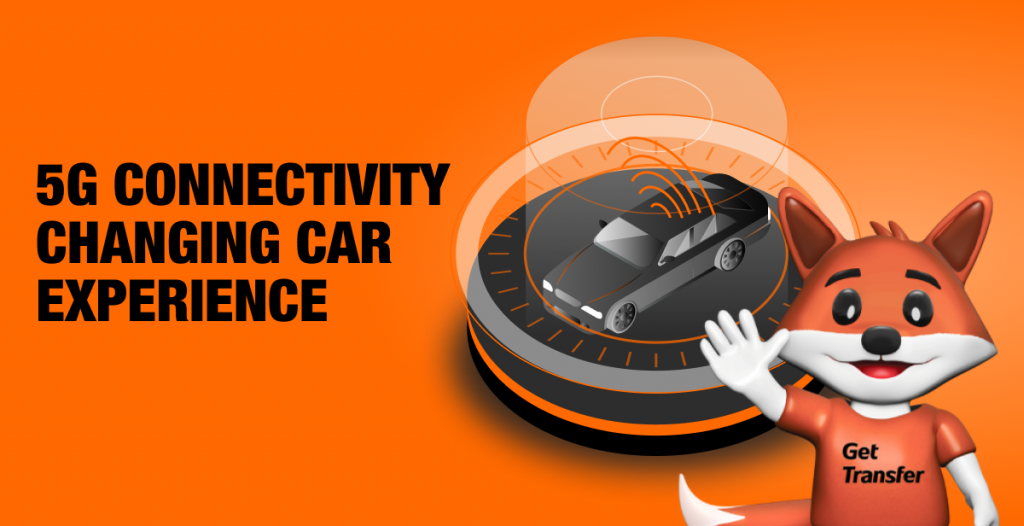

Introduction
The advent of 5G technology is set to revolutionize many aspects of our daily lives, and the automotive industry is at the forefront of this transformation. As the fifth generation of wireless technology, 5G offers unprecedented speeds, reduced latency, and the ability to connect more devices simultaneously. These advancements promise to significantly enhance the car experience, affecting everything from vehicle safety to entertainment and navigation systems. In this article, we will delve into how 5G connectivity is reshaping the automotive landscape, exploring specific examples and drawing insights from various sources to illustrate the profound impact this technology is having.
The Promise of 5G in Automotive
5G technology is not just an incremental improvement over 4G; it represents a quantum leap in wireless communication capabilities. This leap forward is critical for modern vehicles, which increasingly rely on sophisticated communication systems to function effectively. According to McKinsey & Company, the automotive sector is expected to be one of the largest beneficiaries of 5G technology, with market projections estimating the sector’s value to reach an astounding $212 billion by 2025. This growth is driven by the need for faster, more reliable data transmission to support advanced vehicle functions, including autonomous driving, real-time navigation, and enhanced infotainment systems.
The capabilities of 5G are manifold. It can deliver data speeds up to 100 times faster than 4G, with latency reduced to as low as 1 millisecond. This means that vehicles can process and react to information almost instantaneously, which is crucial for the development of autonomous driving technologies. Additionally, 5G can support a much higher density of devices within a given area, allowing for the seamless integration of numerous sensors and connected devices within a vehicle. This connectivity ensures that cars are not only smarter but also safer and more efficient in their operations.
Enhanced Safety Features
One of the most significant impacts of 5G on the car experience is in the realm of safety. Vehicles equipped with 5G can communicate with each other and with infrastructure in real-time, a capability known as Vehicle-to-Everything (V2X) communication. This technology allows cars to share critical information about their speed, direction, and road conditions, enabling them to make split-second decisions to avoid accidents. For example, a 5G-enabled car can receive a warning from another vehicle about a sudden brake ahead, giving the driver or the autonomous system more time to react and prevent a collision.
In China, Huawei and China Mobile have successfully tested 5G-based V2X technology, demonstrating its potential to significantly reduce traffic accidents. These tests have shown that vehicles can communicate effectively with traffic lights, road signs, and other infrastructure, creating a more connected and safer driving environment. This technology is particularly beneficial in urban areas, where traffic congestion and the likelihood of accidents are higher. By enabling real-time communication between vehicles and infrastructure, 5G can help mitigate these risks, leading to fewer accidents and safer roads for everyone.
Moreover, 5G can enhance the functionality of advanced driver assistance systems (ADAS). These systems rely on sensors and cameras to monitor the vehicle’s surroundings and assist the driver in making safe decisions. With 5G, the data from these sensors can be processed and transmitted more quickly, improving the accuracy and reliability of ADAS features such as lane-keeping assistance, adaptive cruise control, and automatic emergency braking. This means that drivers can rely on these systems more confidently, knowing that they are supported by the latest and most reliable technology.
Autonomous Driving
Autonomous vehicles (AVs) represent one of the most exciting developments in the automotive industry, and 5G connectivity is essential to their success. AVs rely heavily on real-time data to navigate and make decisions. 5G connectivity provides the necessary speed and reliability for these vehicles to process vast amounts of data from sensors, cameras, and other sources instantaneously. This high-speed data transfer is crucial for the safe and efficient operation of AVs, enabling them to respond to dynamic road conditions and make informed decisions in real-time.
Waymo, a subsidiary of Alphabet Inc., has been at the forefront of autonomous driving technology. The company has integrated 5G to enhance the capabilities of its self-driving cars, allowing them to respond more quickly to changing road conditions and improve overall safety and efficiency. For example, 5G enables Waymo’s vehicles to communicate with each other and with infrastructure, such as traffic lights and road signs, ensuring that they have the most accurate and up-to-date information. This connectivity is vital for the safe operation of AVs, as it allows them to anticipate and react to potential hazards more effectively.
Additionally, 5G can support the development of more advanced autonomous driving features. For instance, 5G’s low latency and high bandwidth can enable AVs to access and process complex data sets, such as high-definition maps and real-time traffic information, with greater speed and accuracy. This means that AVs can navigate more complex environments, such as urban areas and busy highways, with greater confidence and precision. As a result, 5G can help bring us closer to the widespread adoption of fully autonomous vehicles, transforming the way we travel and commute.
Infotainment and Connectivity
Beyond safety and autonomy, 5G is set to transform the in-car entertainment experience. With faster internet speeds, passengers can enjoy high-definition streaming, online gaming, and other data-intensive applications without interruptions. This level of connectivity turns the car into a mobile entertainment hub, providing a more enjoyable and engaging experience for drivers and passengers alike. For instance, passengers can stream their favorite movies and TV shows in 4K resolution, play online games with minimal lag, and access social media and other online services seamlessly.
Audi has partnered with Verizon to bring 5G connectivity to its vehicles, enabling high-quality video streaming, enhanced navigation, and seamless integration with smart home devices. This integration allows drivers and passengers to remain connected and entertained, whether on a short commute or a long road trip. For example, Audi’s 5G-enabled vehicles can connect to the internet of things (IoT) devices in the home, allowing drivers to control their smart home systems, such as lights, thermostats, and security cameras, directly from the car’s infotainment system. This connectivity provides a more integrated and convenient experience, making the car an extension of the smart home ecosystem.
Furthermore, 5G can enhance the functionality of in-car virtual assistants and voice-activated controls. With faster data processing and transmission, these systems can respond more quickly and accurately to voice commands, making it easier for drivers to control various functions without taking their hands off the wheel or their eyes off the road. For example, drivers can use voice commands to adjust the climate control, set navigation destinations, and access entertainment options, all while keeping their focus on driving. This enhanced connectivity and convenience make the driving experience more enjoyable and stress-free.
Real-time Navigation and Traffic Management
Accurate and real-time navigation is another area where 5G can make a substantial difference. Current navigation systems can sometimes lag or provide outdated information. However, with 5G, navigation systems can receive up-to-the-minute data on traffic conditions, road closures, and other critical factors, making driving more efficient and less stressful. For instance, 5G-enabled navigation systems can provide real-time updates on traffic congestion, accidents, and roadwork, allowing drivers to choose the most efficient routes and avoid delays.
BMW has incorporated 5G technology into its ConnectedDrive system, offering drivers real-time traffic updates, predictive routing, and advanced driver-assistance systems. This connectivity ensures that drivers have the most accurate information at their fingertips, leading to better decision-making on the road. For example, BMW’s 5G-enabled vehicles can communicate with traffic management systems to receive real-time updates on traffic signals and road conditions, allowing drivers to anticipate changes and adjust their driving accordingly. This capability can help reduce traffic congestion and improve overall traffic flow, making driving more efficient and enjoyable.
Moreover, 5G can support the development of intelligent transportation systems (ITS) that use data from connected vehicles and infrastructure to optimize traffic management and reduce congestion. For instance, 5G-enabled traffic lights can adjust their timing based on real-time traffic conditions, ensuring that traffic flows smoothly and reducing the likelihood of bottlenecks. Additionally, 5G can enable more accurate and reliable navigation services for autonomous vehicles, allowing them to navigate complex urban environments with greater ease and efficiency. By improving traffic management and navigation, 5G can help create a more efficient and sustainable transportation system.
Challenges and Considerations
While the benefits of 5G in automotive are clear, there are challenges to consider. The rollout of 5G infrastructure is still in progress, and coverage can be inconsistent, particularly in rural areas. This means that some regions may not yet have access to the full capabilities of 5G, limiting the potential benefits for drivers in these areas. Additionally, there are concerns about the cybersecurity of connected vehicles, as increased connectivity can also increase the risk of cyber-attacks. Ensuring the security of 5G-enabled vehicles and protecting them from potential threats is a critical priority for automakers and technology companies.
Automakers and technology companies are working together to address these challenges. For instance, the 5G Automotive Association (5GAA) is a global, cross-industry organization that brings together companies from the automotive, technology, and telecommunications sectors to develop solutions for safe and secure 5G-enabled vehicles. The 5GAA focuses on creating standards and best practices for the implementation of 5G in the automotive industry, ensuring that vehicles are both connected and secure. This collaboration is essential for overcoming the challenges associated with 5G and realizing its full potential in the automotive sector.
Moreover, the cost of implementing 5G technology in vehicles can be high, posing a potential barrier to widespread adoption. However, as 5G infrastructure continues to expand and the technology becomes more mature, the cost of integration is expected to decrease, making it more accessible to a broader range of automakers and consumers. Additionally, regulatory challenges and the need for standardized protocols for V2X communication must be addressed to ensure the seamless and efficient operation of 5G-enabled vehicles. By working together, industry stakeholders can overcome these challenges and unlock the full potential of 5G in the automotive sector.
Conclusion
The integration of 5G connectivity into the automotive industry is transforming the car experience in ways we could only imagine a few years ago. From enhanced safety features and autonomous driving to superior infotainment and real-time navigation, 5G is set to revolutionize how we interact with our vehicles. As technology continues to advance and 5G infrastructure becomes more widespread, the benefits for drivers and passengers will only grow, making our roads safer, our journeys more enjoyable, and our cars more intelligent. The future of driving is bright, and 5G is at the heart of this exciting transformation.


